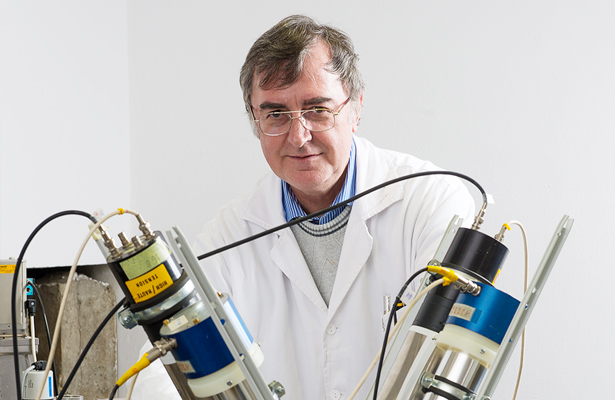Have Physicists Discovered a New Boson?
In 2012, the world’s biggest supercollider discovered the Higgs boson, completing the Standard Model of particle physics. Now a team of little-known Hungarian physicists claim to have found a new, unexpected boson using only the spectrometer shown in this photo.
The team of researchers at the Institute for Nuclear Research at the Hungarian Academy of Sciences (Atomki) noticed a strange hiccup in the decays of beryllium-8 nuclei. As these nuclei undergo a particular transition, they normally shed photons, which sometimes decay into an electron and positron that strike the detector near one another. But every once in a while, the team observed, an electron-positron pair hit the detector at a 140-degree angle. Why was this happening? The Atomki team reported in Physical Review Letters that the anomaly may have come from a previously unknown fundamental particle.
The paper, originally posted on the scientific preprint site arxiv.org, went unnoticed for nearly a year before theoretical particle physicists at the University of California, Irvine, stumbled across it. They parsed the experimental results and theorized that the new particle, if it exists, in turn implies the existence of a fifth force of nature (the four known forces being gravity, electromagnetism and the strong and weak nuclear forces).
As excitement spread about the possibility of new physics beyond the Standard Model, some physicists began to take a closer look at the Atomki group’s track record. It turns out this isn’t the first time they’ve touted a bump in their data as evidence of a new boson. The team made similar claims in 2008 and 2012, only to see the bumps move or disappear after upgrading their equipment. And while the signal was particularly strong this time, bumps in data come and go.
Despite the healthy skepticism surrounding Atomki’s claims, many physicists agree follow-up experiments are warranted to confirm or rule out the possibility.
“We and others have identified many experiments that could check the results,” said Jonathan Feng, a member of the team at Irvine. “It is just a matter of time before we know the answer.”
For more on this story, check out Natalie Wolchover’s full article on QuantaMagazine.org.




